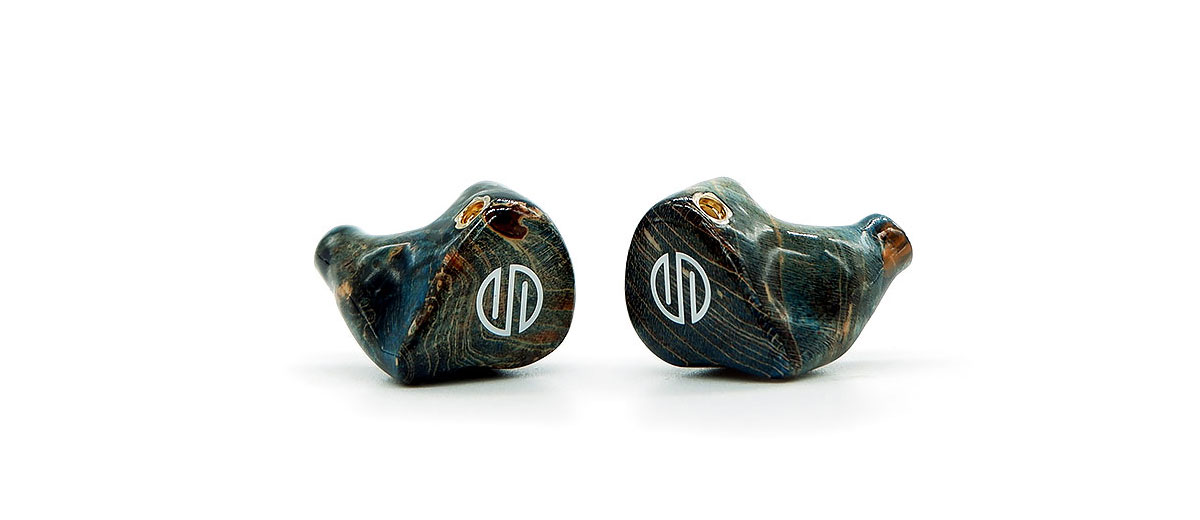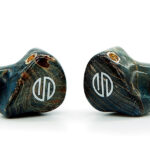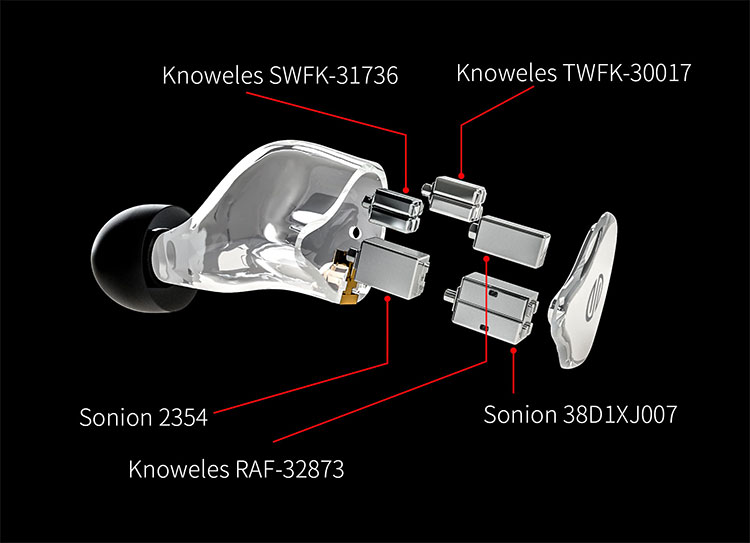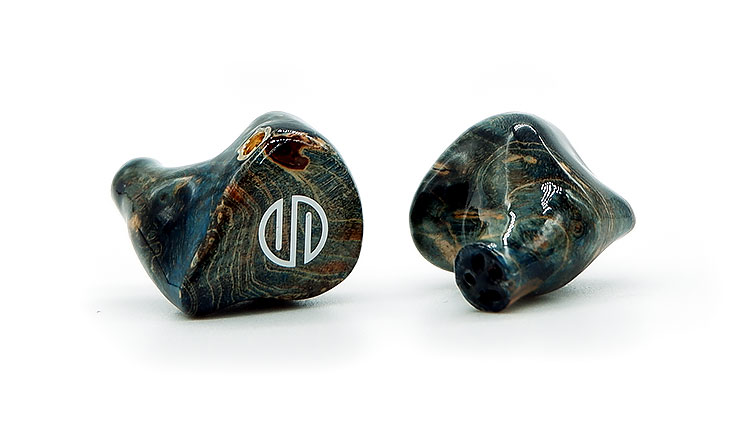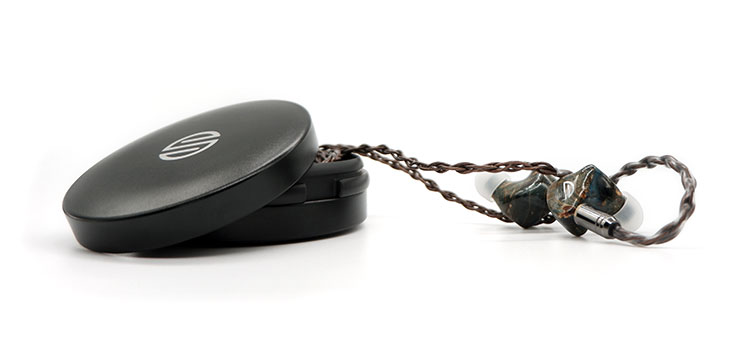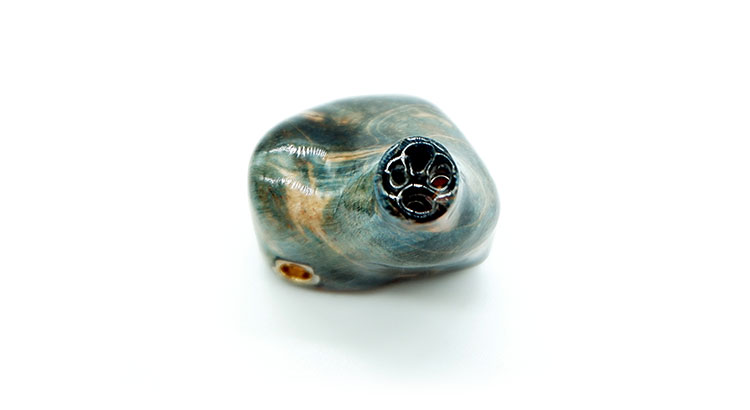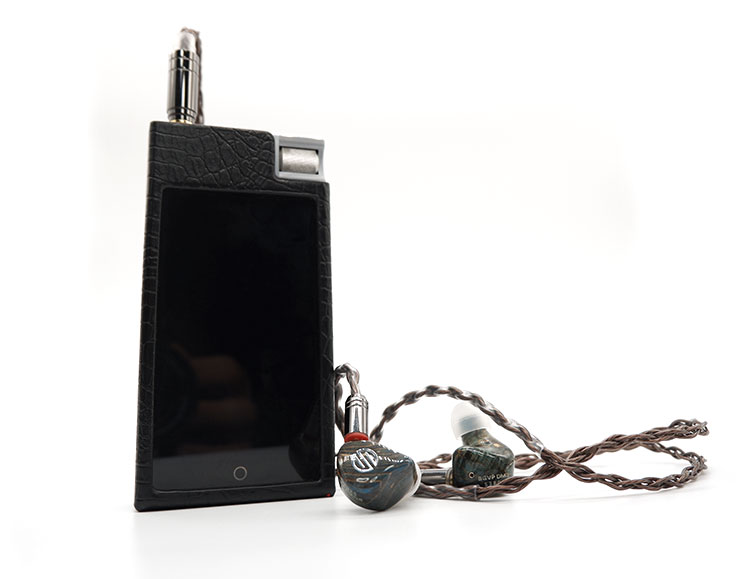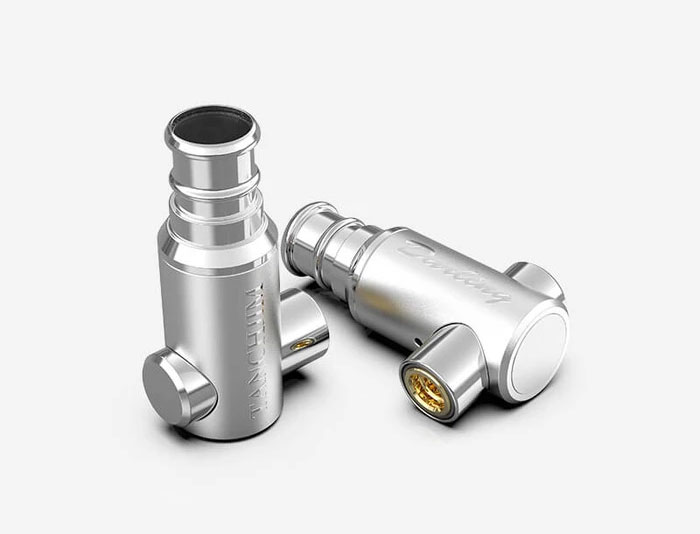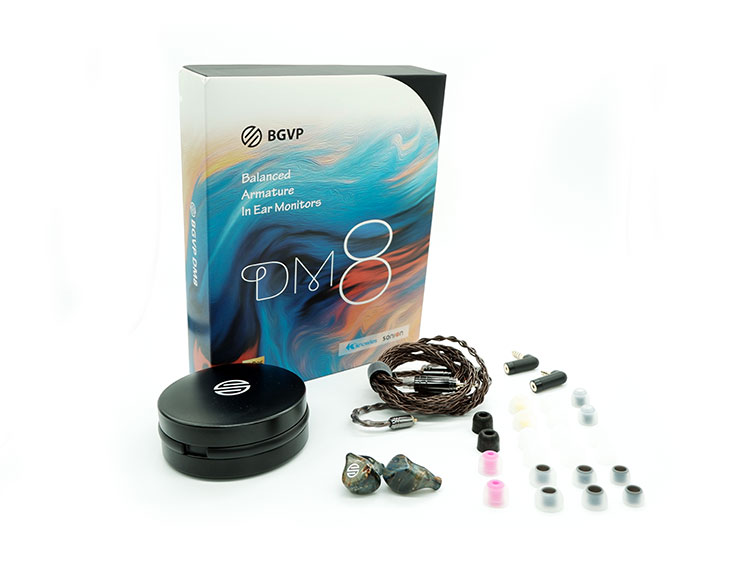The BGVP DM8 is an 8 balanced armature driver flagship universal IEM available in silver or solid wood resin design. It is priced at $349
Disclaimer: The BGVP DM8 sent to us is a sample in exchange for our honest opinion in this review. We thank the team at BGVP for giving us this opportunity.
You can read up on our previous BGVP reviews on Headfonics here.
Note, this review follows our new scoring guidelines for 2021 which you can read up on here.
BGVP is known for producing IEM’s at different price points en masse. They have been doing so since 2015 from the town of Dalang in Dongguan City, China. Although they are well known for their multiple BA IEMs, they have also been doing R&D with electrostatic driver-based IEMs and TWS earbuds.
The DM series is their flagship line for their Balance Armature based IEMs. The DM8 is their newest BA based flagship IEM, and it represents the best of BGVP’s expertise when it comes to Balance Armature technology.
Tech Highlights
Each side of the DM8 features 8 BA drivers, with 2 Sonion drivers producing the bass frequencies, a combination of 1 Sonion driver and 1 Knowles driver producing the midrange, 2 Knowles drivers producing the treble, and an additional 2 Knowles drivers producing the high treble frequencies.
Having 8 drivers on each side is not unique to the DM8, but BGVP ensured that each of the 8 drivers would sound their best by implementing independent acoustic chambers for each of the 4 frequency ranges.
These independent acoustic chambers would then ensure that interference between drivers from different frequency ranges would be kept to a minimum.
Design
Each shell is created with 4th generation DLP 3D printing technology, which does look good, but also has the benefit of being comfortable while it touches the skin for longer periods of time. After 3D printing, each shell goes through a 5-axis CNC process to ensure that all edges are smoothed, and each cavity inside the IEM will be consistent with their design standards.
When ordering the DM8, there are 2 design options, standard clear white or a stabilized wood variant. While they are both stunning to look at, the stabilized wood version has green hues that give each DM a unique pattern. The resin finish also reduces fears of cracking or chipping due to its tough outer layer.
I was hoping that BGVP would have used a metal nozzle with a lip so that any ear tip would stay in place more easily. It’s not much of a problem when you use the ear tips that come with the DM8 in the box though, so it’s not as bothersome as I initially thought it would be.
Stock Cable
The DM8 uses MMCX connections with right/left color coding on the cables for an easy channel alignment. The MMCX connectors are welded with a Stron welding machine with silver lead to ensure higher conductivity.
The cable itself is made of an 8-strand single crystal copper cable with each strand having 50 cores within the cable. While this cable ensures high conductivity for lossless transmission of sound.
It is terminated with a 2.5mm balanced connection, but they also included a balanced 2.5mm to single-ended 3.5mm adaptor and a 4.4mm balanced connection to ensure compatibility with any DAP or amp that you want to connect it to.
Comfort & Isolation
Once the DM8s are inside my ears, they are not that noticeable, as they are ergonomically designed to ensure that they would easily disappear. The ear hook design in the cable also makes sure that the DM8 has a secure fit inside my ears.
The coating of each cable is soft so that it’s easily manageable while still being tangle-free. Putting the DM8 in and taking them out of the included case never becomes a cumbersome process.
While the DM8s have an in-ear design, they don’t isolate too well, since I can hear a bit more outside noise when I wear them. However, when I start playing music, the ambient noise can no longer be heard. I believe this design choice was deliberate, as it helps the DM8 feel a bit less congested overall.
Typically, I can’t wear most IEMs for more than 2 hours, but with the DM8, the ergonomics are designed well enough to ensure that they can be worn for hours. I would have wanted a flatter profile though so that they can comfortably be worn while I rest my head on a pillow. But for general use while up and about, the DM8 will be comfortable enough to be worn for hours on end.
Packaging & Accessories
Since the DM8 is the flagship IEM from BGVP, the packaging that comes with it is quite elaborate. The box itself has a protective sleeve and underneath is the box that has enough inserts to ensure that each part of the package remains in place when it’s being transported or being stored on the shelves.
Aside from the cable and the IEMs, the accessories include the following:
- 2.5mm balanced to 3.5mm single-ended converter
- 2.5mm balanced to 4.4mm balanced converter
- 1 x hard case
- 3 types of silicone ear tips
- 1 x pair of foam tips
- Manual, Warranty card
What’s interesting though is the way that things are organized, as the box has cutouts for each item. Even the ear tips are arranged to ensure that they are kept in place so that each type of ear tip will easily be identified according to what it’s designed to do.
With this kind of package, it’s obvious that BGVP didn’t spare any expense to ensure that the item would arrive in good condition and in a highly presentable manner.
Sound Impressions
Bass
Most Balance Armature based IEM implementations tend to lack in bass quantity, and the DM8 is no exception to this. The bass tends to be rather flat or polite but it has a good amount of detail and texture.
The song Hard Times by Paramore starts with an energetic drum riff, but when listening through the DM8, the impact tends to be less than what I’ve come to expect. While the attack of each drumbeat seems to be fast enough, it simply lacks body for it to feel substantial.
The DM8 doesn’t roll off too early in the sub-bass region so this ensures that the DM8 had a better overall tonal balance with the mid-bass.
The DM8 low-end details are done quite well, however. The texture of drum beats accurately characterizes the type of drums that are being hit. Also, bass grooves have a good amount of fluidity to them.
The slight lack of bass on the DM8 ended up making me listen to music at a slightly louder level to compensate, but that would not be optimal as it would throw off the tonal balance of the rest of the frequency spectrum.
Midrange
The quantity of the midrange is good enough, and it strikes a decent balance of keeping it forward but not too much that it overpowers the bass. Detail retrieval in the midrange is quite good, as it can present nuanced detail in the vocals while remaining extremely accurate.
I tend to listen to the song Wicked Game by Chris Isaac to listen for his ethereal vocal quality. I believe this is achieved by having a playback system that tends to bias to a euphonic tone. However, this is not something that the DM8 specializes in, since it tends to have a more plucked quality in its presentation.
Accuracy might not be a good thing for some songs, while it’s quite beneficial for others. In the song Gotta be Patient by Michael Buble, the DM8 struck a good balance of accurate detail retrieval and musicality. The vocal tracks were well-textured both for male and female vocals. The guitar tracks in the song were particularly well reproduced as well, and each guitar pluck felt very natural.
The midrange is generally accurate, and it stays true to what the recording should sound like. It might have a slightly more plucked character, but that tends to become its strength most of the time.
Treble
On the DM8, the treble is quite good, it’s quite articulate and presented well. I believe that BGVP was careful in ensuring that the DM8’s treble range is not too bright while presenting all details well. It has enough sparkle to let crystalline characters of synthesizers shine through, while never going into the realm of being piercing.
Balancing the treble frequencies with the midrange frequencies is also important, especially in a multi-driver IEM like the DM8. Getting the tonal balance wrong will definitely make instruments sound plain wrong. Fortunately, the DM8 is tuned well, as harmonic overtones of songs with piano such as River Flows in You by Yiruma was never shrill, while having a natural timbral quality.
With 4 drivers handling the treble frequencies of the DM8, I was worried that it might make the treble sound too bright. But I am happy to hear that my worries are not merited, since the treble is accurate, smooth, and well-textured while keeping a safe distance away from being too bright.
Staging
With the amount of detail retrieval that the DM8 has, the soundstage is quite wide with these IEMs. The sound can travel well out of my head, and the shape of the sound stage is also natural, as it can form a slightly forward center image, and the extreme left and right are quite a distance away from my ears.
While soundstage tends to be quite wide, the image directionality is also impressively accurate. In Yosi Horikawa’s Bubbles, each falling bead had a place within the soundstage, and rolling beads also sounded like they were rolling through a certain distance.
The placement is also quite accurate, as there are layers in the soundstage that give a good presentation of the placement of each sound element.
Listening to the Cello Suite No. 1 rendered by Yo Yo Ma, it was obvious that the DM8 can present the Cello tones well. The soundstage was spread out, and there was a sense of depth in the overall presentation.
Most importantly, there was a good sense of dynamics, as the DM8 presented soft tones very delicately, but had enough energy to present the crescendo in the music very powerfully.
The soundstage on the DM8 makes it evident that the DM8 presents details well, and has a wide dynamic range that will make instrumental string music very engaging.
Synergy
Efficiency & Pairings
The DM8 may seem like they’re easy to drive based on their specs sheet, with an impedance rating of just 12Ω, and an SPL of 110dB/mW. Most phones and any on-board laptop soundcard will easily drive the DM8 to the loudest safe listening volume.
While this is true, the DM8 needs quite a bit more refinement than just driving it off of anything that can make it loud. Plugging it into the single-ended output of my Cayin N5ii made the DM8 sound significantly less congested. It also gave the DM8 a much-needed boost in the bass region.
However, the DM8 came to life when it was driven off the balanced output of the N5ii. The soundstage just felt a lot wider and the dynamics were more pronounced overall.
The DM8 does not need much power to drive it to louder listening volumes, but more resolving sources will definitely do justice to what the DM8 is capable of.
Ear Tip Rolling
The DM8 comes with 3 types of silicone ear tips, and the labels are bass, balanced, and vocal. Each of those ear tips come in 3 sizes with an extra pair of bass ear tips already attached to the IEM shells by default. BGVP also includes a pair of memory foam ear tips that are appropriately sized for the nozzle size of the DM8.
The DM8 doesn’t have a lip in the nozzle, but the ear tips that come with the DM8 fit perfectly with their IEM. With the 4 types of ear tips that come with the DM8, it’s quite easy to tune the IEM to your preference.
Generally, I lean towards the larger bore ear tips, as this tends to have a better sense of clarity in some IEMs. But when I listened to the balanced ear tips, which have the larger bore, they tended to significantly cut off the bass regions on the DM8. The bass cutoff also happened to on the Vocal ear tips, but to a lesser degree.
Memory foam ear tips typically produce a good amount of bass, and using foam tips with the DM8 is not an exception to this. With the DM8 having airiness as one of its main assets though, and the foam tips would tend to make the DM8 a bit congested, therefore negating any airiness that the DM8 inherently had.
None of these issues crop up with the bass ear tips since it gives the DM8 a good sense of space and a much better tonal balance. And with the amount of clarity that the DM8 inherently has, using the smaller bore ear tips is not a compromise at all.
Select comparisons
Mangird MT4
$199
Technical
The Mangird MT4 is Mangird’s 2nd foray into the international market, and it’s slightly cheaper currently retailing for just $199.
The MT4 is a hybrid IEM with 1 dynamic driver, and 3 BA drivers, while the DM8 is an 8 driver pure BA IEM. So the difference in driver count, driver technology will come into play when it comes to how different the 2 IEMs may sound.
The DM8 also comes with a balanced 2.5mm cable as standard, together with the extra conversion tips to 4.4mm pentaconn balanced, and 3.5mm single-ended while the MT4 just offers a 3.5mm single-ended termination. The cable on the DM8 is also terminated in MMCX, so it’s much more robust than the 2-pin 0.78mm connection provided with the MT4.
The shells of the 2 IEMs seem quite similar, but the metal nozzle found on the MT4 is just slightly more convenient because of the lip on the nozzle. This lip on the nozzle will give the MT4 more flexibility in aftermarket ear tips because the lip will ensure that most ear tips won’t fall off the IEMs easily.
Performance
Listening to the 2 IEMs, there are some glaring contrasts between them. Having a dynamic driver immediately gives the MT4 a tasteful boost in the bass region, which is very evident in contrast to the DM8’s politer BA textured low-end.
The midrange is about equal on these two though the MT4 has a slightly more liquid quality. The treble on the other hand is more emphasized on the MT4, but upon further inspection, the DM8 has better detail retrieval while not calling attention to itself.
While the MT4 is no slouch when it comes to the soundstage, the DM8 is comparatively wider sounding. In terms of accuracy of image directionality, placement, and layering, it pulls away from the MT4’s imaging performance.
On first listen, the MT4 may seem like the more engaging listen, with a more lively bass presentation and a more sparkly treble region. But the luster of the slightly shouty nature of the MT4 would fade in time when compared to the more refined presentation that the DM8 can provide, even if it slightly lacks a firm bass.
Tanchjim Darling
$419.99
Technical
Tanchjim has always rolled our elegant looking IEMs, and the Darling is no exception. This time, the Darling comes with a black and silver color palette, every part of their package is nicely integrated into the theme. From the box to all the accessories, the included cable, ear tips, as well as the IEMs themselves.
While the entire package of the Darling seems to be a bit more elegant, the DM8 does offer quite a bit more in terms of accessories.
This includes an extra set of earbuds for tuning, as well as the option for a balanced connector right out of the box with adaptors to both 4.4mm pentaconn balanced and 3.5mm single-ended. The Darling comes with just a single-ended termination with the Darling.
Both IEMs are also worn quite differently since the Darling is designed to be worn straight down, while the DM8 is designed with ear loops.
Typically I would prefer to wear the straight-down design, but I ended up preferring the comfort provided by the DM8 because of more carefully designed ergonomics especially when it comes to the overall shape of the IEM as well as the size of the nozzle.
The Darling doesn’t come with as many drivers as the DM8, with just 3 drivers, 1 DD + 2BA. But is that low-end dynamic driver on the Darling enough to be top dog?
Performance
With the dynamic driver, I expected the Darling to immediately pull ahead in terms of bass when compared to the DM8. However, I was surprised that in terms of tuning, the bass on the Darling was not as forward as the DM8.
Although the DM8 has a more plucked quality to its bass, it reaches deeper into the sub-bass region, and it even has a more punchy delivery. This resulting in the DM8 having a more pleasant bass response even when compared to the Darling and its dynamic driver.
The midrange on the other hand sounded about the same on both, but the Darling was slightly more liquid. Although instrument timbre is just a bit more natural on the DM8, because of the more appropriately tuned treble response of the DM8. Piano tones ended up being comparatively brighter on the Darling, but that’s not to say that the Darling is a bright IEM in itself.
While the DM8 has a very wide soundstage, the soundstage on the Darling is the more natural of the 2. Because of the appropriateness of the shape and size of the soundstage relative to the placement of the sound elements and the shape of the overall soundstage.
The DM8 ended up being the more detailed of the 2 IEMs because picking out details within each of the tracks was easier with the DM8 overall.
On paper, I would have immediately preferred the Darling because of the hybrid design, and the straight down cable design. However, a lot of my expectations did not translate into reality, as the DM8 ended up being the more comfortable of the two.
Having a good amount of detail retrieval, a wider and more layered soundstage, and an overall pleasant tonality helped the DM8’s case in my book.
Our Verdict
BGVP has been around for quite a few years, and there is a good reason for this longevity. With a complete array of accessories to makes sure you’re ready to go when the IEM arrives, as well as a well-engineered ergonomic design to ensure comfort, the DM8 is a complete package.
Although initially, I wasn’t excited about a pure BA design on an IEM, my expectations were subverted. Without calling your attention to any particular frequency range, the DM8 still manages to have a great amount of detail retrieval.
It may not have been as impressive on my first listen, but the unassertive detailed nature of the DM8 has me gravitating towards it when I want to just be immersed in my music while I relax.
BGVP DM8 Specifications
- Material:Resin
- Line Length:125cm
- Wearing Method: In-ear
- Impedance:12Ω
- Sensitivity:111dB/mW
- Frequency Response Range:10-45000Hz

